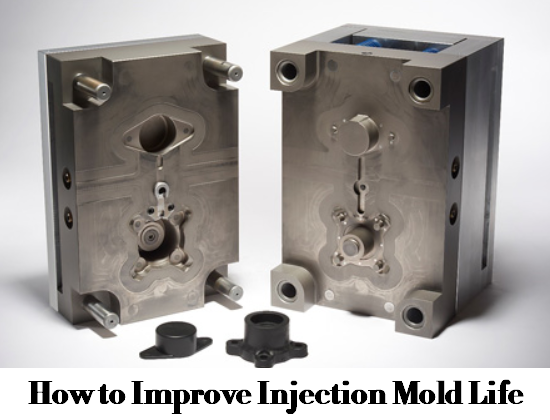Mold is the main processing equipment in industrial manufacturing, the quality of injection mold has an obvious impact on the molded parts, the tooling also takes a significant proportion in the production cost of the injection molding factory. So, it makes sense that to use high-quality injection mold with long service life. In this article, we’ll focus on the actual life of injection mold and how to increase it.

What is Injection Mold Life?
Mold life refers to the number of parts that can be manufactured on the premise of ensuring quality. What mold life exactly means is how many parts are guaranteed by the factory to produce off of a given tool. Mold failure is divided into abnormal failure and normal failure. Abnormal failure (early failure) means that the die can not be used when it does not reach the recognized service life under a certain industrial level. The forms of early failure include plastic deformation, fracture, local severe wear, and so on. Normal failure means that the die can not continue to serve due to slow plastic deformation, uniform wear, or fatigue fracture after mass production. The number of qualified products produced before the normal failure of the mold is called the normal life of the mold, which is referred to as the mold life.
How Long Does an Injection Mold Last?
The types of mold construction and mold materials used determine the mold lifetime, associated costs and lead times. There are different types of tooling with different mold lifetimes.
– Rapid tooling. This kind of mold can be made with either aluminum or soft steel inserts, it’s best for prototyping, as they offer the fastest possible lead time and typically the mold life is around ten thousand shots, the tooling costs are typically lower for rapid tooling, but the unit price tends to be higher.
– Low volume or bridge tool. These tools are made from medium hardness P20 or NAK80 steel interceded for 100,000 shots, these types of tools strike a solid balance between fast filling manufacturing, lead times, and quality parts.
– High-volume production tool. These tools are made from hardened H13 steel or 420 stainless steel, they have a mold life of 250,000 to 1 million shots.
How to Improve the Life of Injection Mold?
The injection mold lifetime is affected by various factors, comprehensive measures should be taken to extend the mold life.
1. Selection of plastic raw materials: on the premise of meeting the service performance and product quality, plastic raw materials with good process performance are generally selected to mold products, which is not only conducive to the molding of products but also conducive to the improvement of mold life.
2. Mold structure design: considering the service life of the mold, the structural form with good strength and stiffness and easy repair can prolong the service life of the mold. When designing small and medium-sized injection molds, the determination of cavity wall thickness focuses on the strength conditions. The determination of cavity wall thickness of large die should be calculated and checked in strict accordance with the stiffness conditions to prevent excessive deformation in the working process. The mold design should also maintain the thermal balance of the mold. Through the reasonable design of the gating system, temperature regulation system and exhaust system, the mold hot crack tendency can be reduced and the service life of the mold can be improved.
3. Mold material and heat treatment: the injection mold cavity is generally complex, with high requirements for accuracy and surface roughness. The selection of mold material should not only meet the customer’s requirements for product quality, but also consider the material cost and strength within the set cycle, and meet certain work requirements, such as wear resistance, high-temperature resistance, corrosion resistance, etc. Using plastic die steel with excellent mechanical properties and good processability can improve the molding quality and die life of plastic parts. In addition, the heat treatment process should be reasonably arranged and the heat treatment process conditions should be strictly controlled in the mold manufacturing process.
4. Mold processing and surface treatment: the cutting of mold shall strictly ensure the smooth connection of fillet radius, straight line and arc at the size transition. In order to prevent grinding overheating and grinding cracks, the grinding feed can be appropriately reduced, and the coarse-grained grinding wheel with strong cutting force or the grinding wheel with poor adhesion can be selected. For the injection mold, due to the requirements of plastic surface quality, corrosion resistance and demoulding, the smoothness of the working surface of the mold is required to be high. At the same time, the wear and bonding of the mold occur on the surface of the parts, and fatigue and fracture often start from the surface. The surface strengthening treatment can effectively improve the hardness and wear resistance of the cavity surface, so as to prolong the service life of the mold.
